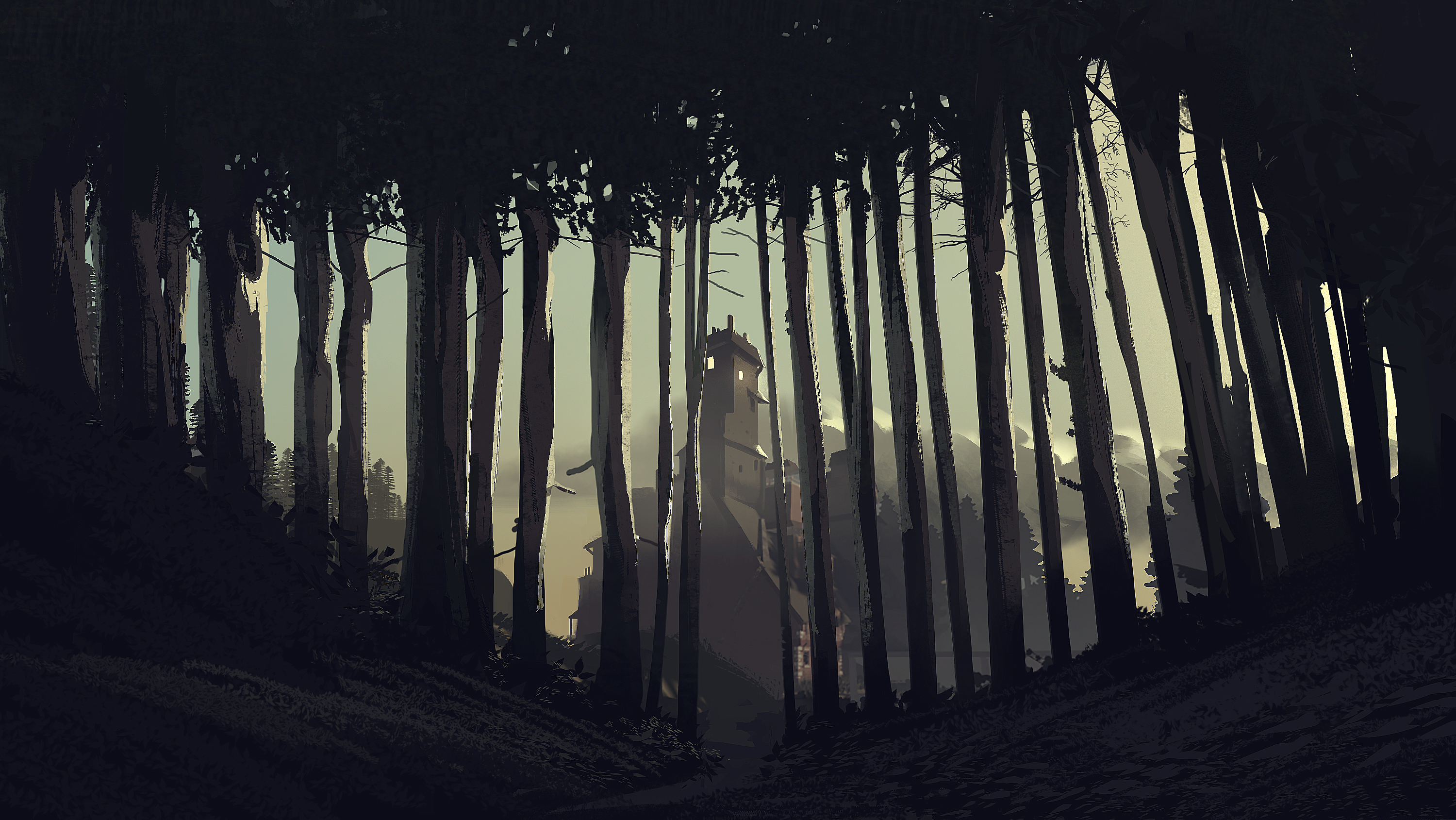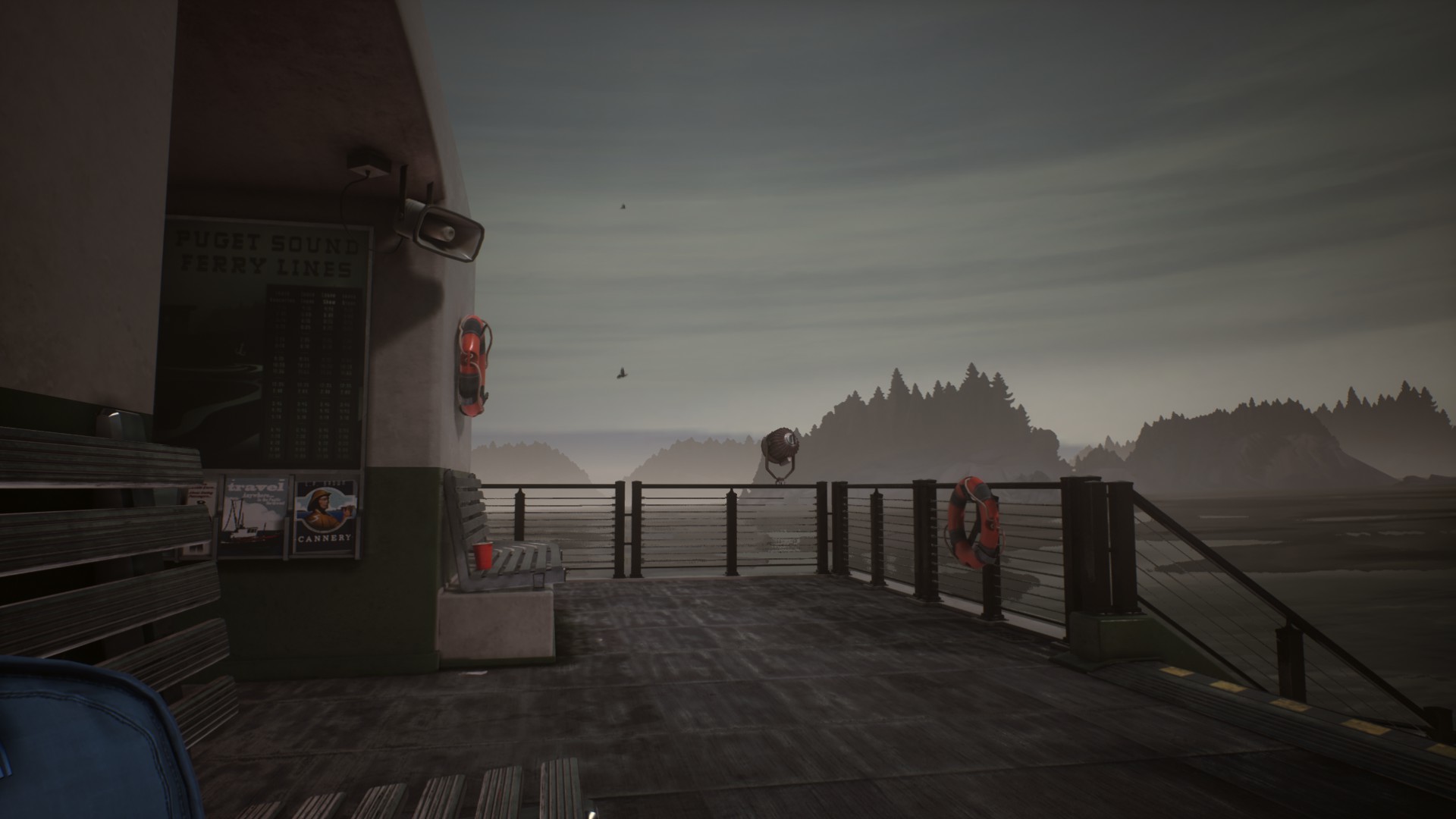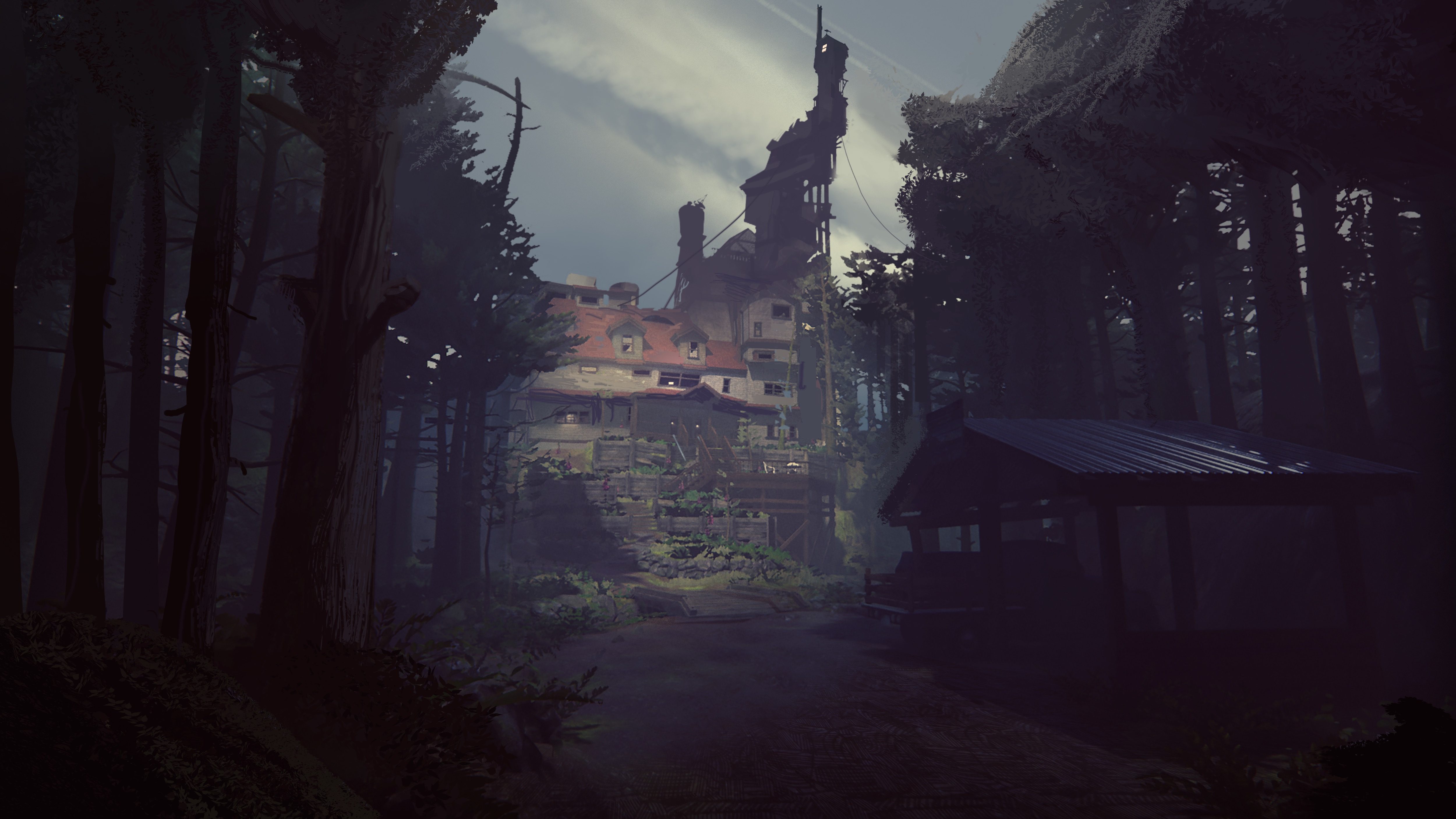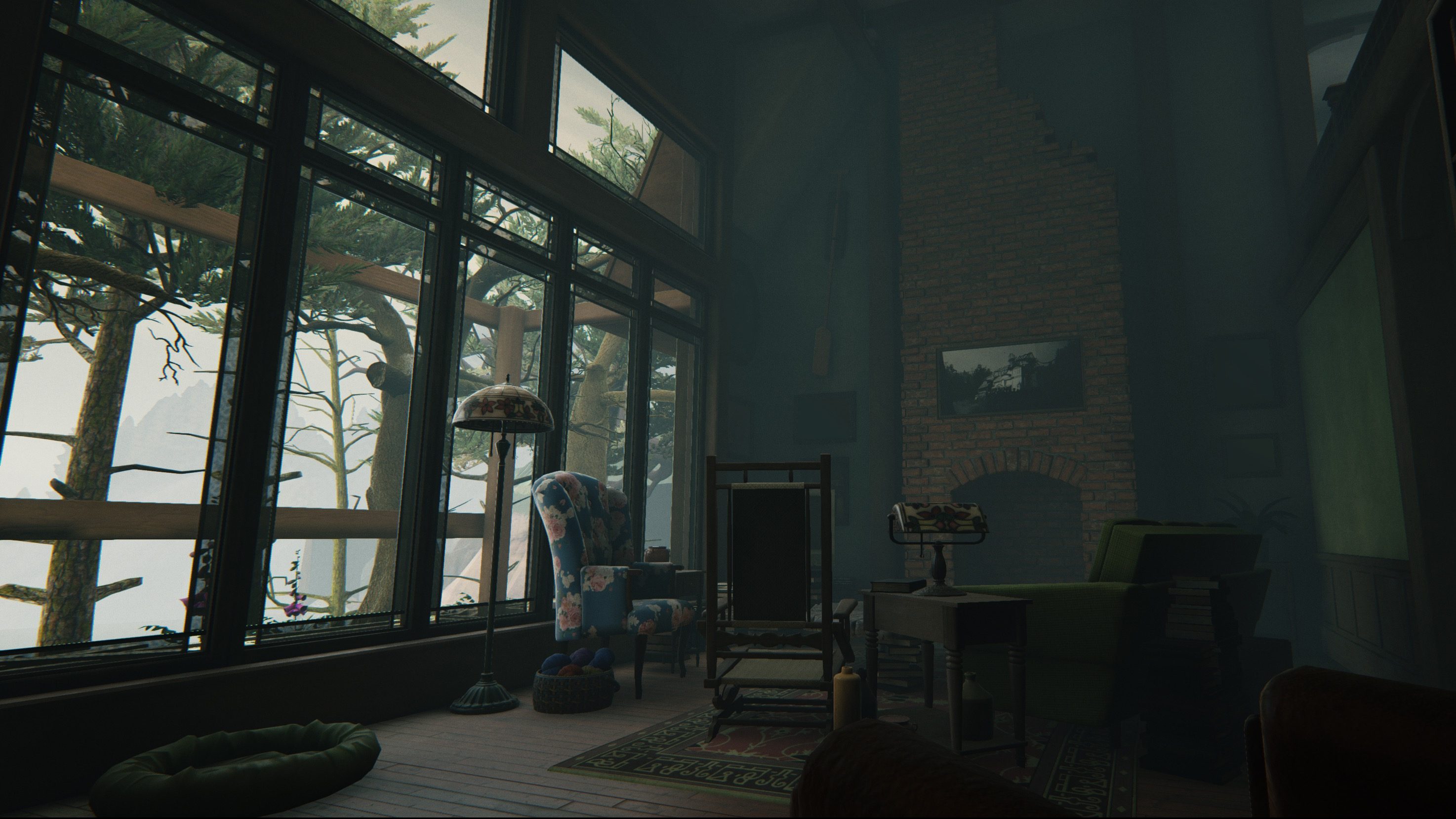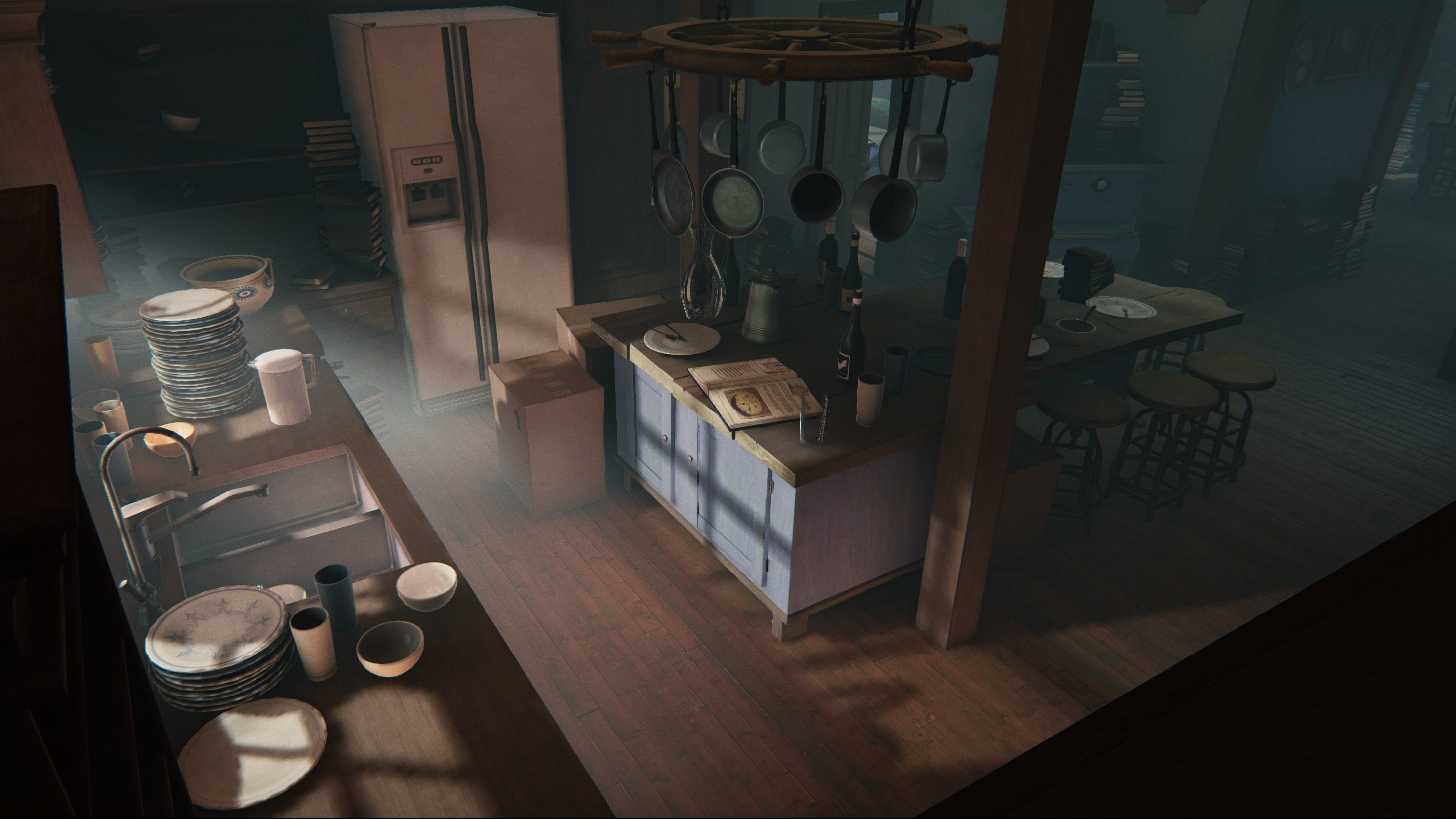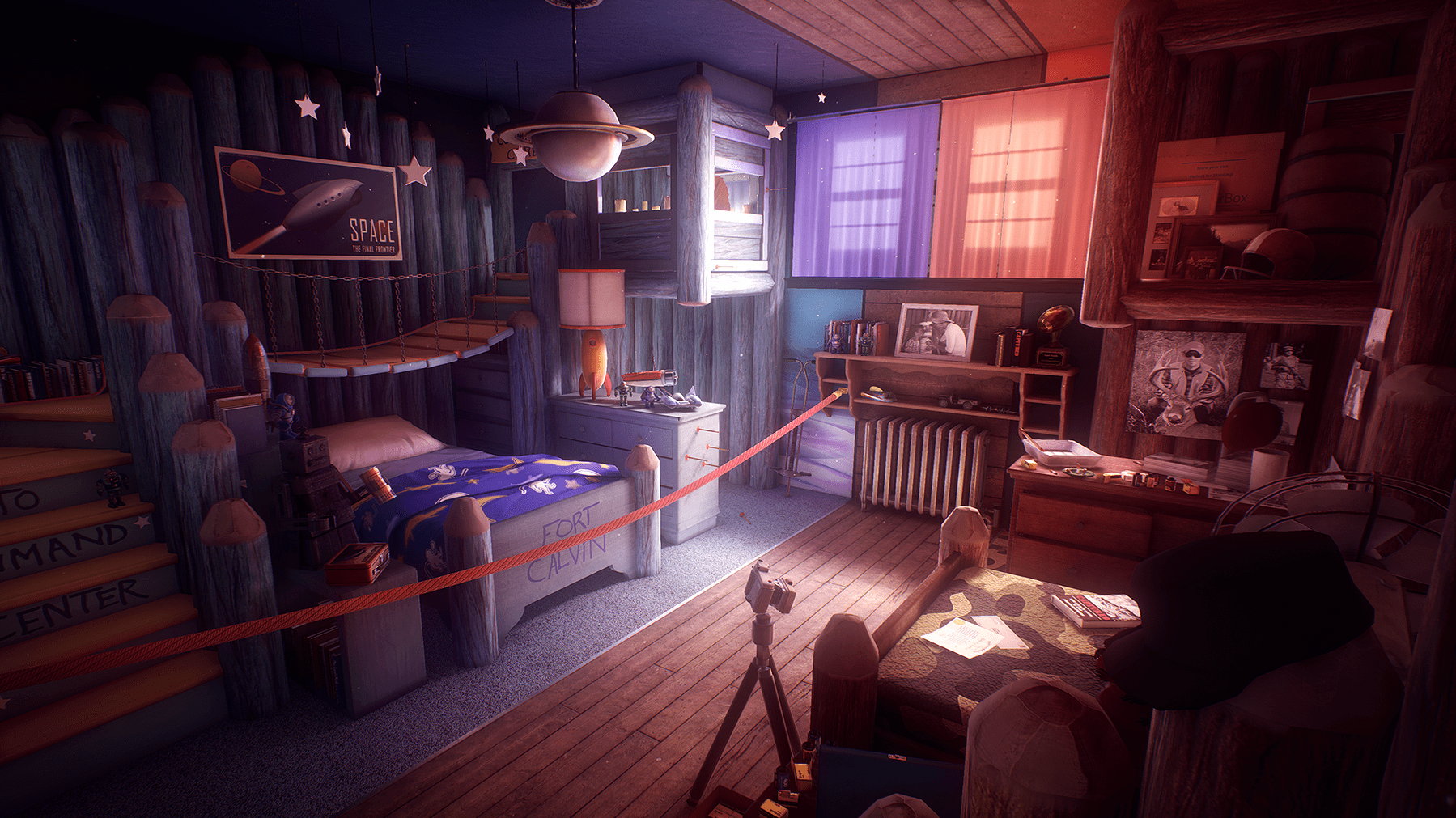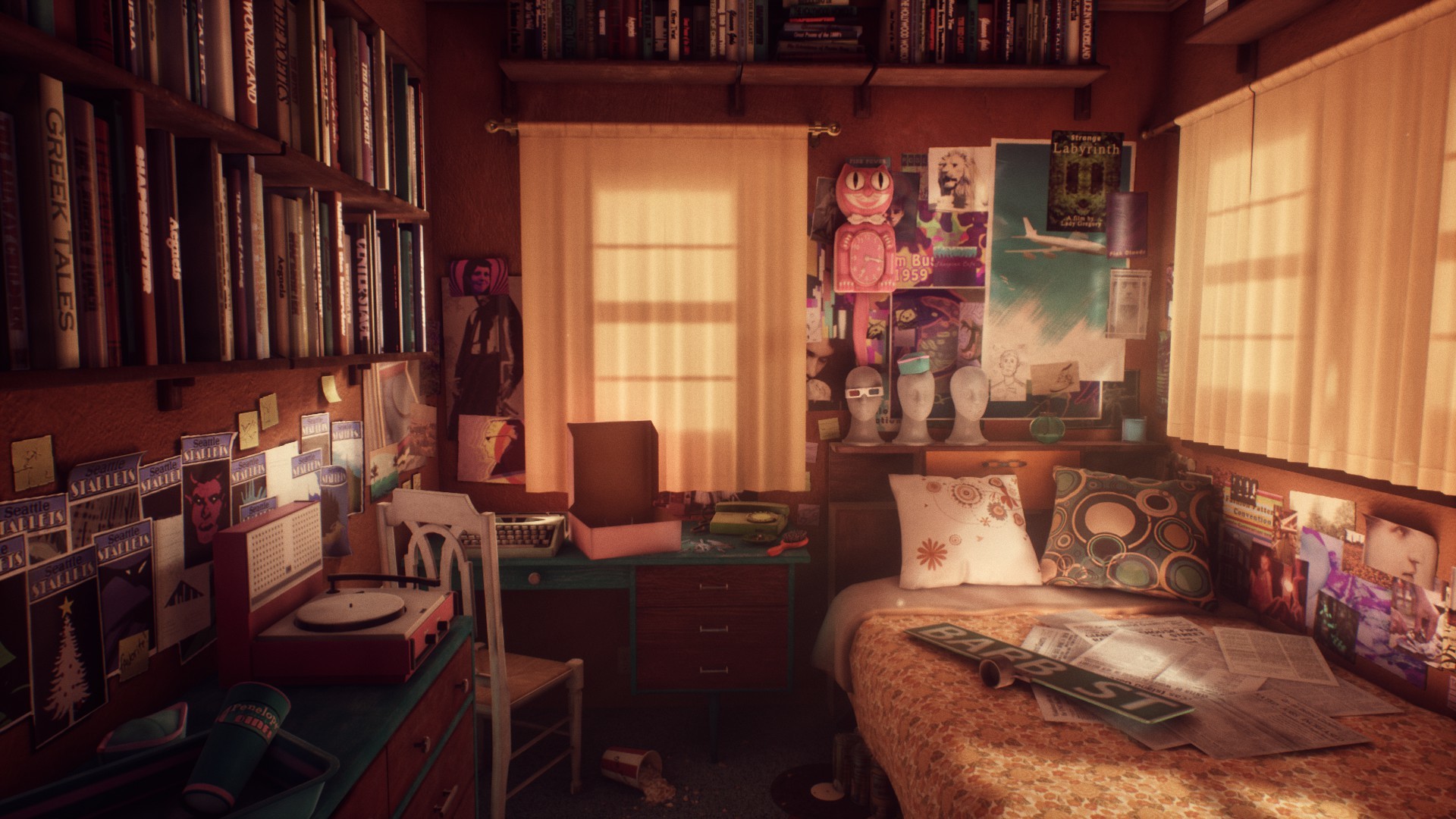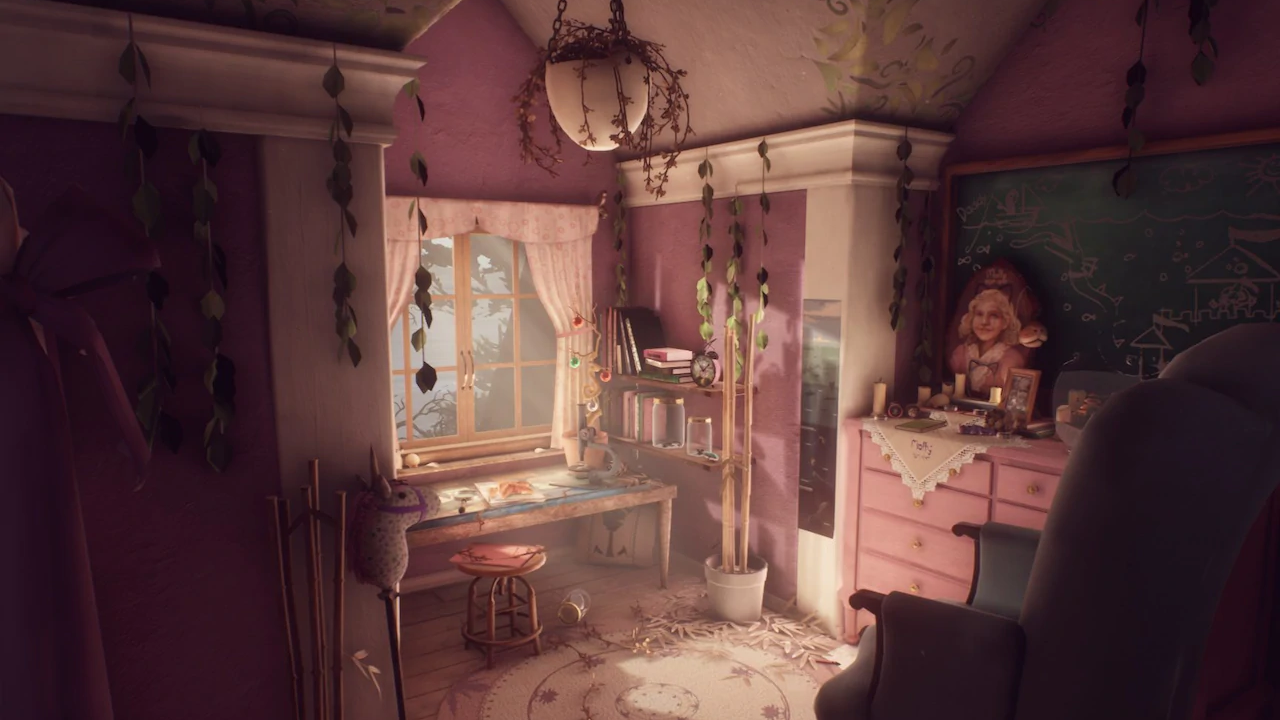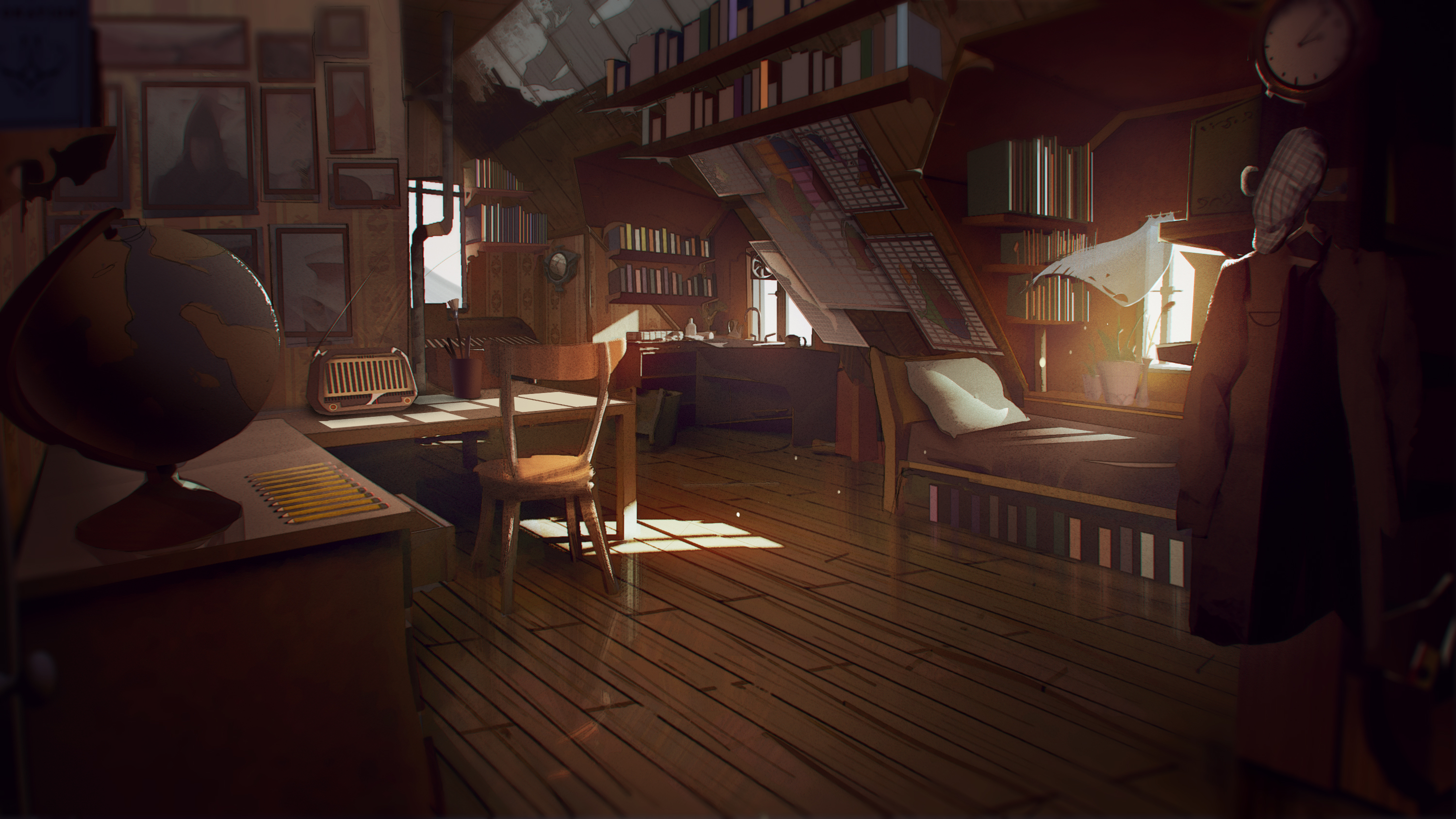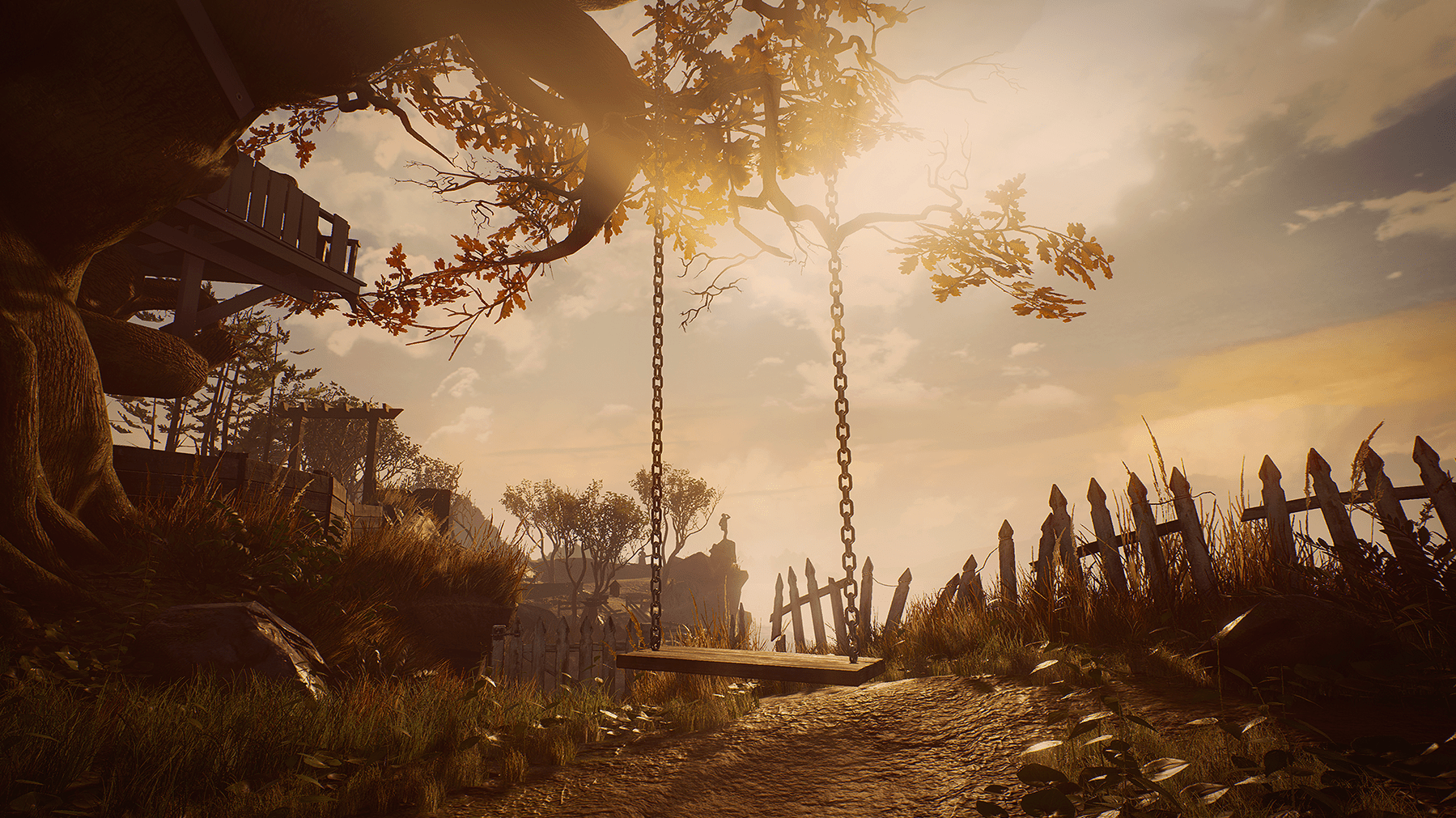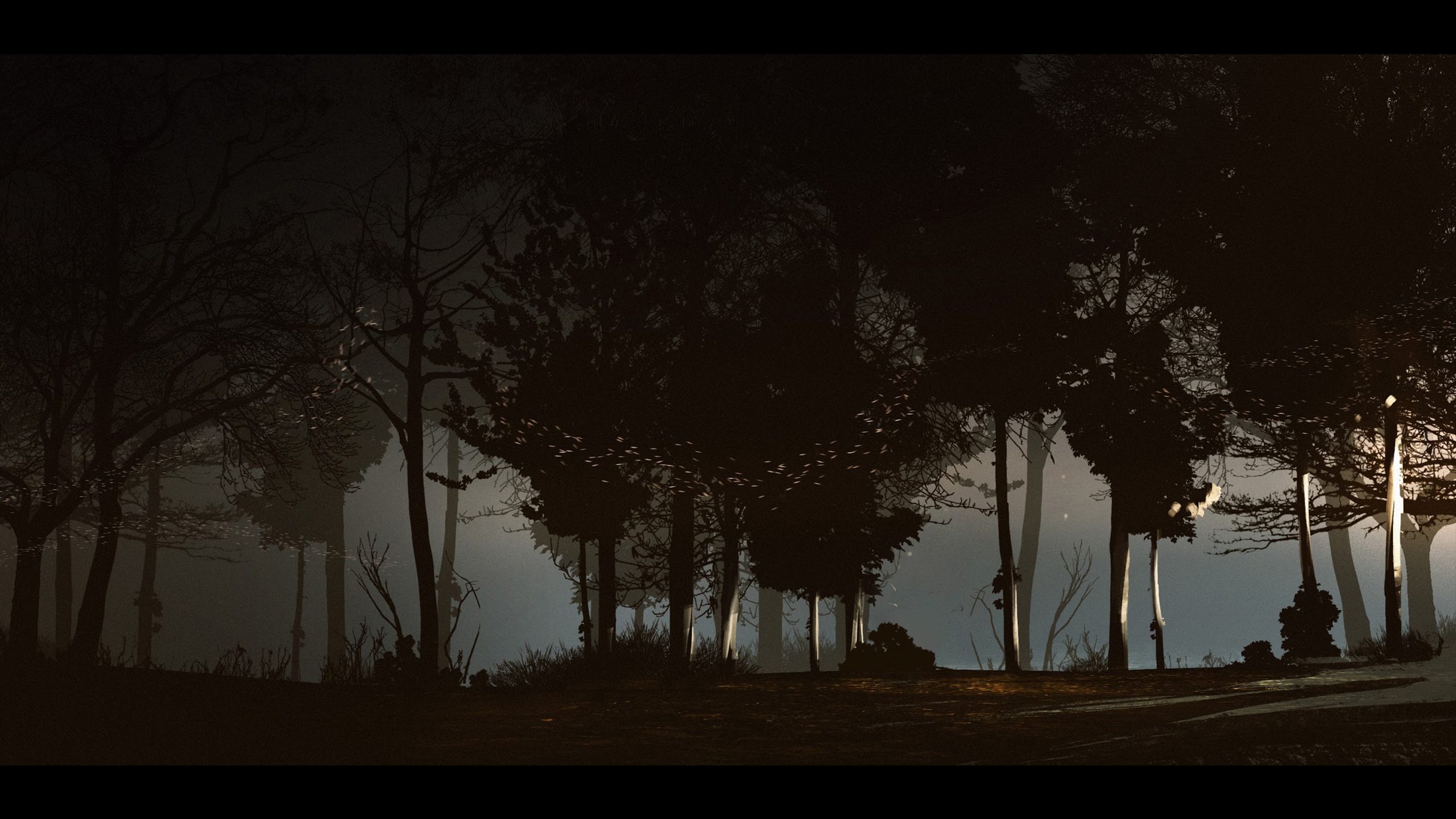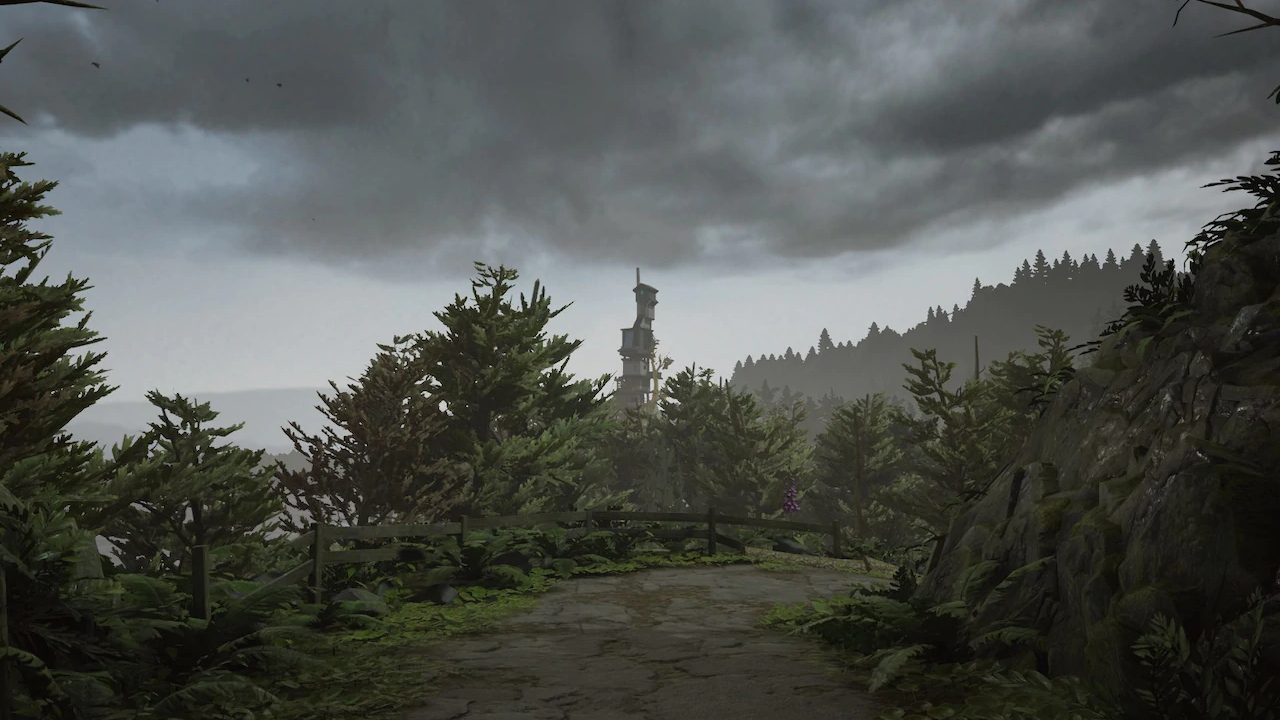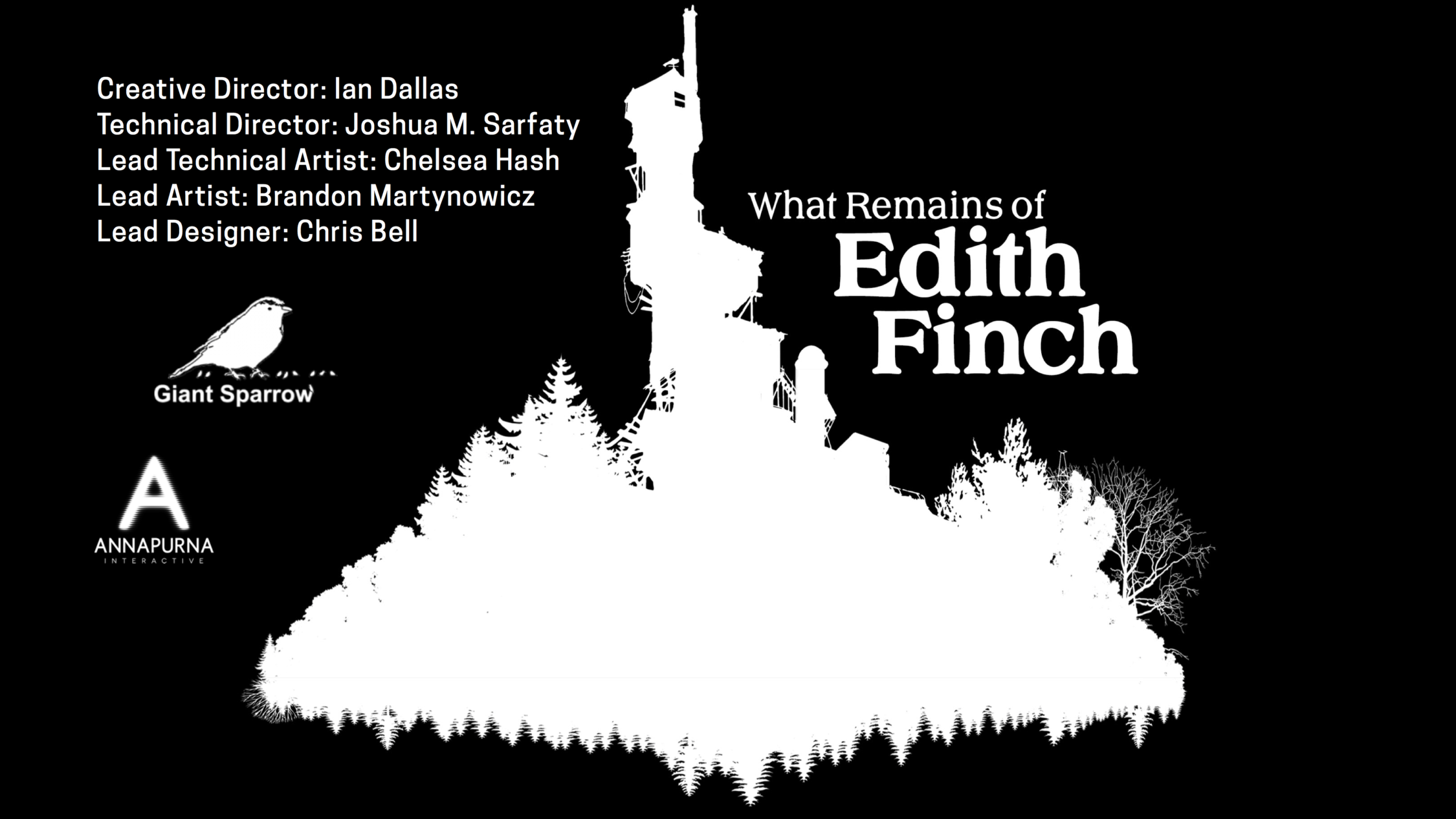What Remains of Edith Finch
“For people who are interested in new ways of telling stories, I’d encourage them to forget about that . . . . Just find something very small and focused that’s really compelling to you. I think too many people are worried about how to tell their story, rather than focusing on what story you’re trying to tell. If you have something unique to say, and you spend enough time exploring that idea and what it means to you, you’ll find a unique way of expressing it.”
—Ian Dallas
What Remains of Edith Finch is a collection of short stories about an ill-starred family on Orcas Island in Washington State. Each story offers a chance to experience the life of a different family member from the early 1900s to the present day. The gameplay and the tone of the stories are as varied as the family members themselves. The only constants are that each is played from a first-person perspective, and that each story ends with that family member’s death. Ian Dallas is the creative director at Giant Sparrow, a small, Los Angeles-based video game company focused on creating surreal experiences people have never had before. He headed the development team for What Remains of Edith Finch and for the studio’s earlier game, The Unfinished Swan.
What Remains of Edith Finch went on to win Best Game at the 2018 BAFTA Video Game Awards in London.
Ian Dallas is the creative director at Giant Sparrow, a small, Los Angeles-based video game company focused on creating surreal experiences people have never had before. He headed the development team for What Remains of Edith Finch and for the studio’s earlier game, The Unfinished Swan.
What Remains of Edith Finch went on to win Best Game at the 2018 BAFTA Video Game Awards in London.
“The game is sectioned into a number of stories of varying lengths, each focusing on a different member of the Finch clan. These are marvellously crafted; no single one is the same, and they explore interactive narrative in myriad incredible ways. The mechanics and structure themselves are part of the joy or sorrow, part of the emotional impact. . . . It’s especially noteworthy, too, for death to be so impactful in a video game. How often do we die in games? For death to have meaning, a game must create a believable facsimile of life, and ‘Edith Finch’ does this fantastically. The Finches: infuriating, frustrating, lovable, flawed, vulnerable, but deeply, deeply human.”
“The true accomplishment of ‘What Remains of Edith Finch’ is that it invites players to abandon the dream of interactive storytelling at last. Yes, sure, you can tell a story in a game. But what a lot of work that is, when it’s so much easier to watch television, or to read. . . . If there is a future of games, let alone a future in which they discover their potential as a defining medium of an era, it will be one in which games abandon the dream of becoming narrative media and pursue the one they are already so good at: taking the tidy, ordinary world apart and putting it back together again in surprising, ghastly new ways.”
